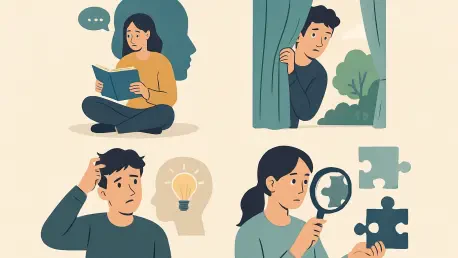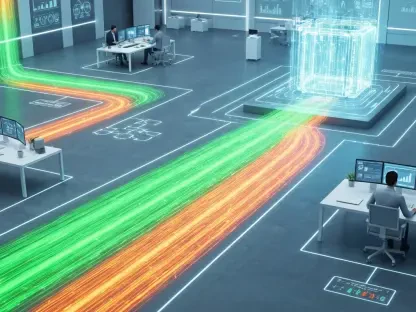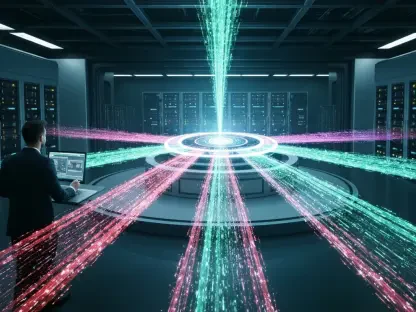Have you ever stopped to consider that intelligence might not just be about scoring high on tests or excelling in a classroom setting, but rather about the subtle, instinctive ways a person navigates life’s complexities? Beyond the realm of grades and formal education, there are unique behaviors and thought patterns that often go unrecognized yet point to exceptional cognitive abilities. This exploration delves into seven distinct signs that suggest a mind operating at a higher level, focusing on natural tendencies rather than learned skills. These indicators reveal how intelligence manifests in everyday interactions, personal reflections, and an innate drive for growth.
What sets these traits apart is their untaught nature—they emerge without formal instruction or external prompting. Whether it’s an ability to read between the lines of social interactions or a persistent curiosity that challenges conventional norms, such characteristics paint a broader picture of what it means to be truly intelligent. This discussion aims to uncover these hidden markers, shedding light on how they shape a dynamic and adaptable mindset in often unexpected ways.
Unseen Cognitive Strengths
Instinctive Self-Reflection and Social Awareness
A remarkable trait often overlooked in traditional assessments of intelligence is the ability to instinctively reflect on one’s own thought processes, a skill known as metacognition. This involves an automatic awareness of why certain emotions or reactions arise, allowing for deeper self-understanding. Such introspection isn’t something typically taught in schools or workplaces, yet it plays a critical role in enhancing problem-solving and emotional regulation. Individuals with this ability often find themselves dissecting their mental responses to various situations, gaining insights that help them navigate challenges with greater clarity. This internal dialogue acts as a powerful tool, enabling a level of self-awareness that sets them apart from those who rarely question their inner workings.
Another profound indicator of cognitive strength lies in the knack for noticing subtle behavioral patterns in others without explicit training. This skill manifests as a heightened sensitivity to changes in tone, body language, or facial expressions, often before words are even spoken. It reflects a form of social intelligence that allows for accurate predictions of moods or intentions, fostering stronger interpersonal connections. This ability to read unspoken cues demonstrates an empathetic understanding of human behavior, enabling real-time adjustments in interactions. Often, this talent operates below the surface, guiding decisions and responses in ways that feel almost intuitive, yet it underscores a sophisticated mental framework at play.
Adaptive Communication
The capacity to adjust communication styles to suit different audiences stands as a subtle yet powerful sign of linguistic intelligence. This involves tailoring explanations—whether simplifying complex ideas for a younger listener or using relatable analogies for a peer—ensuring the message resonates effectively. Such adaptability often happens without conscious effort, revealing a mind that prioritizes connection and clarity over rigid delivery. It’s a skill that enhances collaboration in diverse settings, from professional environments to casual conversations, by bridging gaps in understanding. This instinctive flexibility highlights a deeper cognitive ability to assess and respond to the needs of others in the moment.
Beyond just clarity, this trait also showcases an inherent knack for empathy in communication, as it requires gauging the emotional or intellectual state of the listener. For instance, switching from technical jargon to everyday language when speaking with someone unfamiliar with a subject demonstrates not just knowledge but also consideration. This behavior often goes unnoticed as a marker of intelligence because it feels so natural to those who possess it. Yet, it plays a pivotal role in building trust and fostering effective dialogue across varied contexts. The ability to mold language and tone dynamically is a testament to a brain wired for nuanced social navigation, setting a foundation for meaningful exchanges.
Hands-On Learning and Creative Thinking
Experiential Learning
A preference for learning through direct experience rather than adhering to structured instructions often points to a high level of procedural intelligence. This hands-on approach means diving into tasks, experimenting, and figuring things out through trial and error, often leading to quicker mastery of skills. Unlike those who rely on step-by-step guidance, individuals with this trait thrive when given the freedom to explore and adapt on their own terms. This method of learning reflects a practical mindset that absorbs knowledge through action, making abstract concepts tangible and applicable. It’s a clear indicator of a mind that processes information dynamically, turning challenges into opportunities for growth.
This experiential tendency also reveals a resilience to setbacks, as mistakes become valuable lessons rather than deterrents. When faced with a new skill or problem, the inclination to tinker and test different approaches often results in innovative solutions that others might overlook. This learning style isn’t just about avoiding conventional paths; it’s about a deeper understanding that comes from engaging directly with the material at hand. Environments that allow for such experimentation often see these individuals excelling, as their ability to adapt in real-time bypasses the limitations of rigid frameworks. This trait underscores a cognitive strength that prioritizes practical application over theoretical instruction, marking a distinct intellectual advantage.
Divergent Thinking
Engaging in frequent “what if” scenarios or imagining multiple outcomes to a situation signals a creative form of divergent thinking, a hallmark of an innovative mind. This habit involves exploring possibilities beyond the obvious, often in everyday contexts like problem-solving or casual discussions. It’s not uncommon for such individuals to brainstorm alternative solutions or envision different paths, even when a straightforward answer exists. This mental flexibility fosters creativity, pushing boundaries and challenging conventional ideas with ease. The ability to think outside the box in this manner often leads to unique perspectives that can transform ordinary situations into opportunities for ingenuity.
Moreover, this type of thinking isn’t limited to artistic pursuits—it applies to analytical and practical challenges as well, demonstrating a versatile cognitive approach. By constantly questioning the status quo and considering hypothetical situations, there’s a natural inclination to anticipate outcomes and prepare for various scenarios. This forward-thinking mindset often results in proactive decision-making, setting the stage for leadership and innovation in diverse fields. While it might seem like daydreaming to some, this persistent exploration of alternatives is a critical component of a mind that refuses to settle for the first or easiest solution. It highlights an intellectual curiosity that drives progress, both personally and in broader contexts.
Critical Mindset and Mental Drive
Challenging the Status Quo
A tendency to question illogical or inefficient rules, even from a young age, often marks a critical mindset that refuses to accept things at face value. This analytical behavior involves scrutinizing systems or norms that seem outdated or unfair, driven by a desire for improvement rather than mere rebellion. Such individuals frequently identify flaws that others overlook, proposing better ways to approach problems or tasks. This trait isn’t about defiance for its own sake but about a deep-seated need to align actions with reason and efficiency. It reflects a cognitive strength that prioritizes logic over blind compliance, often leading to meaningful change in personal or professional spheres.
This critical perspective also fosters a reputation for innovation, as challenging established methods can uncover new paths to success. Whether it’s rethinking a workplace process or questioning societal expectations, the drive to improve systems demonstrates a mind that operates on a higher analytical plane. While this habit might occasionally clash with authority or tradition, it ultimately serves as a catalyst for progress when channeled constructively. Environments that encourage such questioning often benefit from fresh ideas and solutions that might otherwise remain unexplored. This relentless pursuit of betterment is a clear sign of intelligence that thrives on dissecting and rebuilding the world around it for the greater good.
Constant Need for Growth
An unmistakable sign of a highly capable mind is the mental restlessness that emerges when there’s no new knowledge or challenge to engage with. This persistent need for intellectual stimulation—whether through reading, picking up new hobbies, or tackling complex problems—indicates a brain wired for continuous growth. Boredom becomes almost intolerable without something to stimulate thought, pushing individuals to seek out fresh ideas or skills to master. This drive isn’t about fleeting interests but a deep craving for complexity that keeps the mind active and evolving. It’s a trait that often sets apart those with exceptional cognitive capacity from those content with routine.
This hunger for learning also translates into a lifelong commitment to personal development, often spanning diverse fields and disciplines. The pursuit of knowledge becomes a source of fulfillment, with each new piece of information or skill adding to a broader understanding of the world. Unlike temporary curiosity, this is a sustained force that shapes habits and priorities, ensuring that mental stagnation is never an option. Such individuals often inspire others through their enthusiasm for growth, turning their need for stimulation into a positive influence in collaborative settings. This relentless quest for expansion underscores a profound intellectual vitality, marking a mind that is always reaching for the next level of insight or achievement.
Reflecting on Hidden Brilliance
Looking back, the exploration of these instinctive behaviors reveals a nuanced understanding of intelligence that transcends conventional benchmarks. The journey through self-reflection, social perceptiveness, adaptive communication, and hands-on learning paints a picture of minds that operate with remarkable depth and agility. Creative questioning, critical analysis of norms, and an unyielding drive for mental growth further illustrate how cognitive strengths often hide in plain sight, unrecognized by traditional measures. Each trait stands as a testament to the diversity of human intellect, showing that brilliance often emerges from the most unassuming habits and tendencies.
Moving forward, recognizing these untaught signs offers a pathway to nurture and celebrate unique mental strengths in oneself and others. Encouraging environments where curiosity and critical thinking are valued over rote compliance can unlock potential that might otherwise remain dormant. Fostering spaces for experiential learning and creative exploration could amplify these natural abilities, turning them into powerful tools for innovation. As society continues to evolve, embracing this broader view of intelligence promises to redefine success, focusing on the dynamic ways minds adapt and grow beyond any test or textbook.









